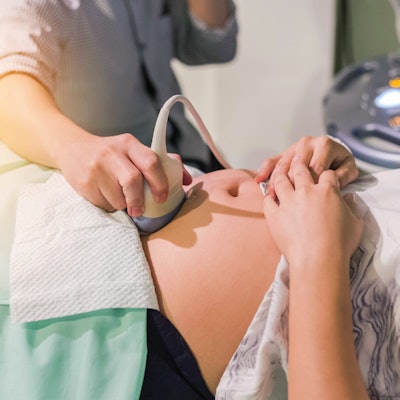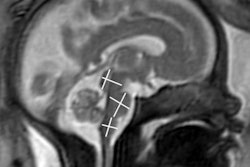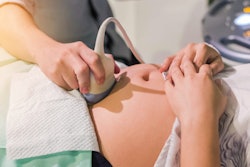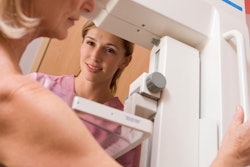
Transabdominal ultrasound can examine fetal head descent and assist in vaginal birth for fetuses with reshaped heads, according to research published August 10 in the American Journal of Obstetrics and Gynecology.
A group of researchers led by Dr. Rasha Kamel from Cairo University Hospitals in Egypt found transabdominal ultrasound to be feasible and strongly correlated with transperineal ultrasound measurements, especially early in labor.
"Transabdominal ultrasound examination of fetal head descent might be easier to perform for most clinicians and is not affected by fetal head molding (reshaping)," the team wrote. "Moreover, women prefer transperineal ultrasound before clinical vaginal examinations, and transabdominal scanning might be even more acceptable to laboring women."
The fetal skull is compressed and reshaped when passing through the birth canal in an event called molding, since skull bones can overlap. During reshaping, the fetal head is elongated, increasing the probability of a vaginal delivery.
Such reshaping, however, can lead to overestimating descent on vaginal and transperineal ultrasound scans. With molding, the leading bony part of the fetal skull may be below the ischial spines while the largest diameter of the skull still remains above the pelvic inlet, making assisted vaginal birth risky.
An attempt at assisted vaginal birth in such a situation would be associated with risks of maternal and neonatal complications, and therefore contraindicated in modern obstetrics, the study authors wrote.
Kamel and colleagues said examining true fetal head descent with ultrasound is considered the "holy grail" of intrapartum ultrasound imaging.
"Assessment of fetal head descent is essential for monitoring labor progress," they said.
In the current study, the team wanted to find out the correlation between transabdominal and transperineal assessment of fetal head descent, as well as study fetal head shape at different labor stages and head positions.
The researchers investigated the cases of 123 women between December 2019 and December 2020. Of these, 19 were examined before induction of labor, eight in the latent phase, 52 in the active first stage, and 44 in the second stage.
While transperineal ultrasound measured fetal head descent away from the center of the skull, transabdominal ultrasound measured more toward the center of the skull.
The correlation between the transabdominal and transperineal ultrasound measurements was found to be -0.90. Interobserver agreement, meanwhile, was examined in 30 women and the intraclass correlation coefficient was 0.98.
"We found a longer head in fetuses in active labor compared with those examined before the start of the active phase. This may be due to molding, but it could also be caused by different head sizes and positions," the study authors wrote.
With this method, the descent angle above the pubis (suprapubic) and the angle of progression could be measured in all cases, as well as the distance from below the pubis to the lowest part of the skull.
In the second stage of labor, the upper part of the fetal skull was found to be below the suprapubic line in 59% of cases where the fetus was in the occiput anterior and occiput transverse positions. However, the upper part of the fetal skull was above the suprapubic line in all seven cases where the fetus was in the occiput posterior position (p < 0.01).
While the researchers said more studies are needed before wider adoption of the transabdominal technique, they touted their method as having a lower threshold for clinical use and adding information about fetal head engagement that "cannot be objectively obtained otherwise."
"Ultrasound adds information and has the potential to reassure clinicians and increase the safety of operative vaginal deliveries by proper selection of cases eligible for assisted vaginal birth," they said.



















